 CONTE NTS
CONTE NTS

INTRODUCTION
In the centre of the fruit is a seed like a peeled chestnut. And between this and the rind is the part which is eaten, which is abundant, and is a paste similar to butter and of very good taste. Gonzalo Fernandez de Oviedo
Sumario de la Natural Historia de las Indias, 1526
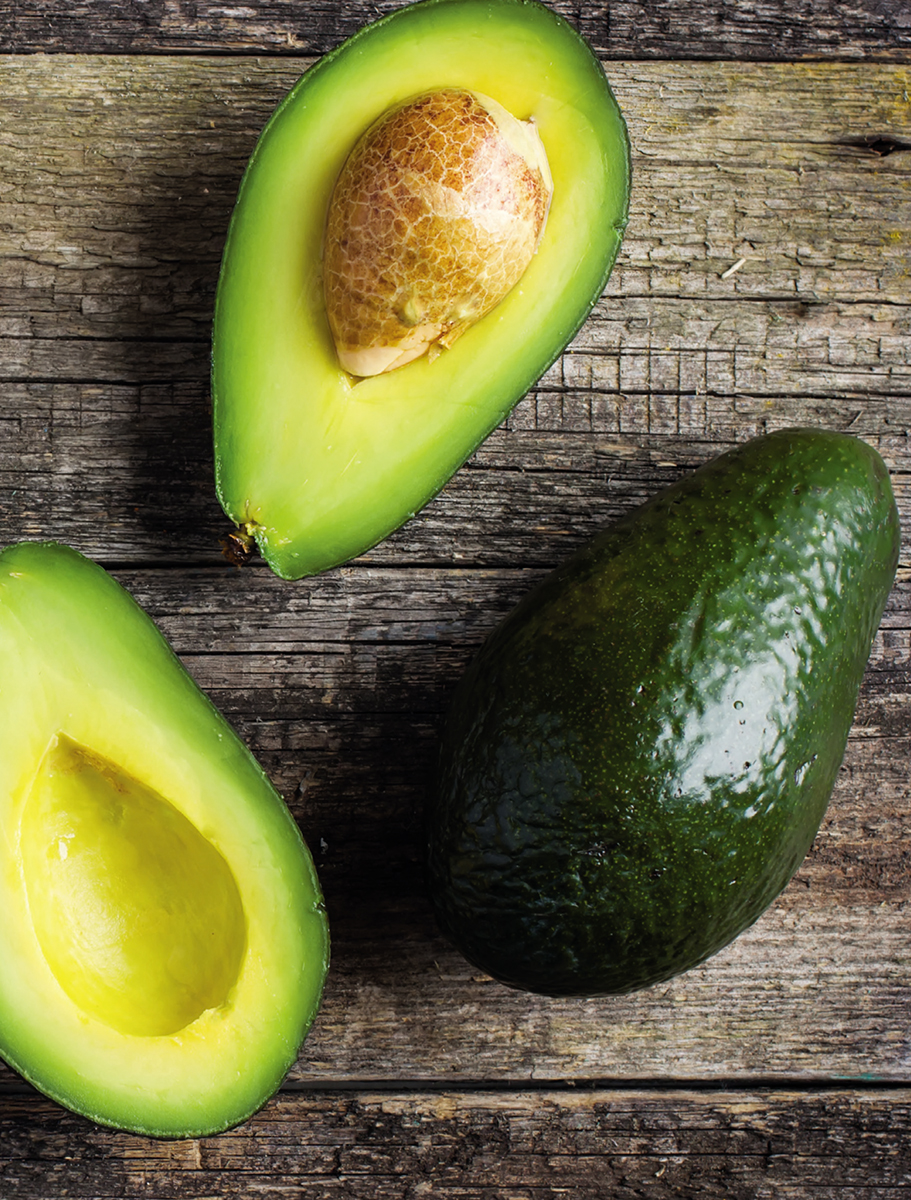
HISTORY
Avocados originated in Mexico, where archaeological evidence shows them being gathered and eaten around 10,000 years ago. The tribes of Mesoamerica began to cultivate them from around 7,000 years ago. The Aztec name for the avocado was ahuacatl, meaning testicle, a reference to the shape of the fruit and also to its reputed aphrodisiac qualities. At the start of the 16th century the first Europeans arrived in the Americas and discovered a host of exotic new fruits. The first written mention of the avocado comes from explorer Martn Fernndez de Enciso who, in his book
Summa de Geografa (1519), described a fruit he had seen in Colombia: here are groves of many different sorts of edible fruits, among others is one which looks like an orange, and when it is ready for eating it turns yellowish; that which it contains is like butter and is of marvellous flavour, so good and pleasing to the palate that it is a marvellous thing. That same year the historian Gonzalo Fernandez de Oviedo travelled with the famous explorer Cortez, and wrote about avocados in his
Natural History of the Indies, published in 1526, noting that they were excellent when eaten with cheese.
The Spanish translated ahuacatl as aguacate, and bought this new fruit back to the Old World with them. As the explorers pushed inland the avocado began to spread to other parts of the Americas, and eventually it arrived on the island of Jamaica. When the British took back control of Jamaica from the Spanish the avocado came to their attention.  In 1657 a London publication describing Jamaica mentions Avocatas, a wholesome, pleasant fruit; in season in August, and sold for eight pence per piece. This was expensive avocados were obviously a novelty food. The next reference in English came in a 1672 work by William Hughes entitled The American Physician: Or a treatise of the Roots, Plants, Trees, Shrubs, Fruit, Herbs & growing in the English Plantations in America, where he gives a fuller description of what he called the Spanish Pear or the Shell-Pear.
In 1657 a London publication describing Jamaica mentions Avocatas, a wholesome, pleasant fruit; in season in August, and sold for eight pence per piece. This was expensive avocados were obviously a novelty food. The next reference in English came in a 1672 work by William Hughes entitled The American Physician: Or a treatise of the Roots, Plants, Trees, Shrubs, Fruit, Herbs & growing in the English Plantations in America, where he gives a fuller description of what he called the Spanish Pear or the Shell-Pear.
He speculates that the names given to the fruit are due to it being planted by Spaniards, or a reference to the shell-like or crusty peel. When Sir Hans Sloane, the renowned physician and collector, catalogued Jamaican plants in 1696, he referred to the fruit as an avocado for the first time. (He also called it the alligator pear-tree in reference to the rough scaly skin of the fruit.) The avocado was by now widespread throughout the Americas. George Washington visited Barbados in 1751 and noted the popularity of agovago pears. During the 19th century avocado trees began to be planted in California, primarily by collectors of rare plants. An early assessment of the viability of commercial crops concluded that there was no prospect of them succeeding due to their lack of sweetness.
However crops and varieties of avocado continued to be experimented with, and the first meeting of the Californian avocado growers took place in 1915 with a stern admonition not to use the term alligator pear again the avocado had arrived! Crops were also grown in Florida and Hawaii, although initially interest was localised. IN 1657 A LONDON PUBLICATION DESCRIBING JAMAICA MENTIONS AVOCATAS, A WHOLESOME, PLEASANT FRUIT; IN SEASON IN AUGUST, AND SOLD FOR EIGHT PENCE PER PIECE. 
During the 1950s the popularity of the avocado really took off, when it began to be included in salads. In the 1960s and 1970s the avocado featured in sophisticated British cuisine as an unusual ingredient for hors doevres (
Mrs Beetons Cookery and Household Management, 1966), commonly paired with prawns and salad dressing. Not to mention being a colour inspiration for a generation of bathroom suites Today, the avocado has been rediscovered and reinvented by a generation of well-informed and inspired foodies. Mexico, the spiritual home of the avocado, remains the biggest producer, however avocados are grown and enjoyed all over the world from California to New Zealand.
Avocados are now an indispensable component of modern cooking. The versatility of this amazing fruit means it can be used in a wide range of recipes including dips and salads, drinks, main courses and puddings. Recognised for their nutritional and health benefits, avocados are also utilised in beauty products and treatments as they contain skin-boosting vitamins and oils. HEALTH BENEFITS Avocados contain a highly beneficial range of around 20 minerals and vitamins which are essential to good health. Although they have a high fat content (a medium avocado contains significantly more calories than a Mars bar), this fat is the right kind of fat mono-saturated fat which helps reduce high cholesterol levels and thus lower the risk of heart disease and stroke.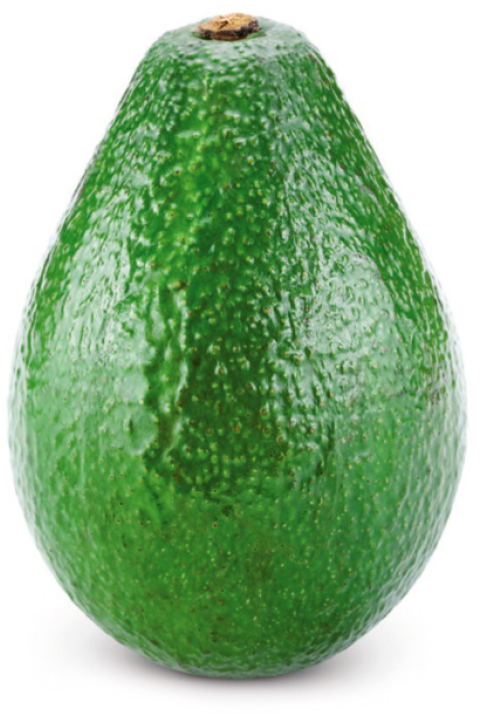 Avocados are a good source of dietary fibre, soluble and insoluble, essential to effective digestion and to maintaining bowel health. Soluble fibre slows down the breakdown of carbohydrates so that your body feels fuller for longer, aiding weight loss by suppressing the urge to eat too often.
Avocados are a good source of dietary fibre, soluble and insoluble, essential to effective digestion and to maintaining bowel health. Soluble fibre slows down the breakdown of carbohydrates so that your body feels fuller for longer, aiding weight loss by suppressing the urge to eat too often.
Avocados contain good quantities of folic acid which has been shown to decrease the risk of heart disease and stroke. It is also beneficial to pregnant women as it cuts the risk of neural birth defects in the foetus. Folic acid also helps combat depression and facilitates good sleep and appetite. In addition, avocados contain potassium which also fights depression and fatigue, as well as regulating heart rate and blood pressure and aiding digestion. One avocado contains more potassium than a banana. Avocados contain several important vitamins including Vitamins C, E, K, B5 and B6.
Vitamin K supports good bone health and helps your blood to clot properly, while Vitamin E boosts the immune system and is essential for good skin health. Avocados also contain traces of the minerals iron, copper, magnesium and manganese, which your body uses to strengthen bones, keep the heart healthy and produce red blood cells.  Avocados are known to be a nutrient booster, which means they help your body better absorb nutrients, such as carotenoids, in other vegetables. Your skin is also protected by the antioxidants contained in avocados including beta-carotene, Vitamin C and Vitamin E, which protect against sun exposure and environmental damage, thus preventing wrinkles and slowing down signs of ageing. The oleic acid contained in avocados is also excellent for skin regeneration. Avocados are great for your eyes as well, due to the antioxidants lutein and zeaxanthin, which protect against macular degeneration and cataracts.
Avocados are known to be a nutrient booster, which means they help your body better absorb nutrients, such as carotenoids, in other vegetables. Your skin is also protected by the antioxidants contained in avocados including beta-carotene, Vitamin C and Vitamin E, which protect against sun exposure and environmental damage, thus preventing wrinkles and slowing down signs of ageing. The oleic acid contained in avocados is also excellent for skin regeneration. Avocados are great for your eyes as well, due to the antioxidants lutein and zeaxanthin, which protect against macular degeneration and cataracts.

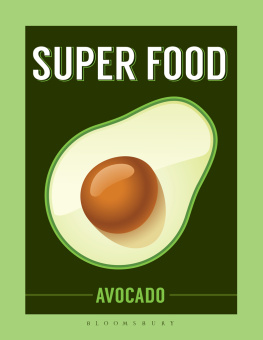

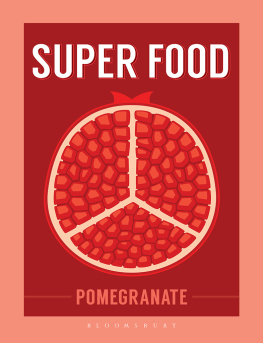
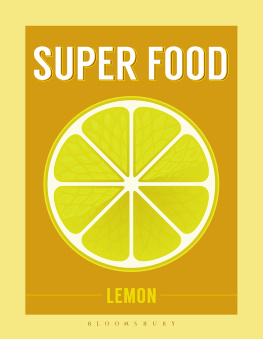
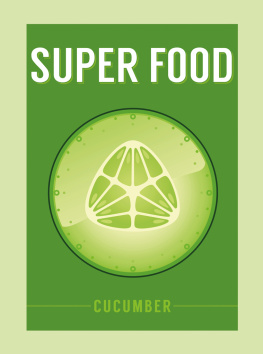
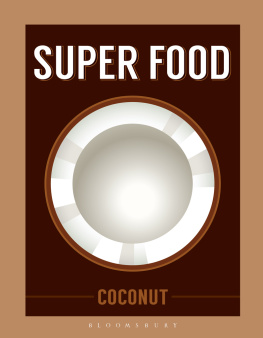
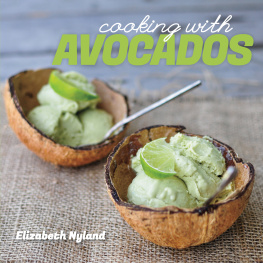
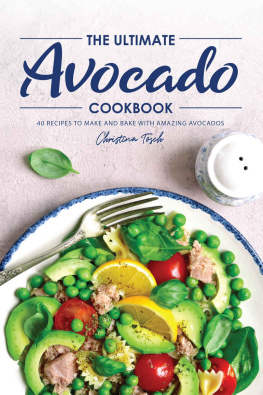
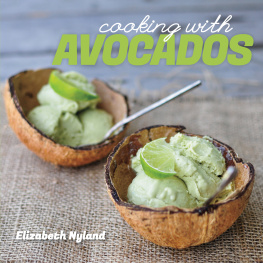
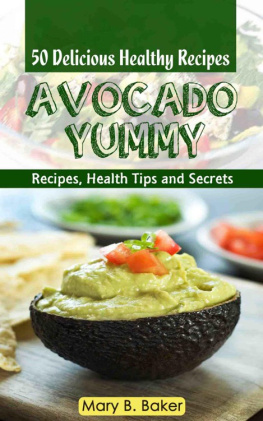

 CONTE NTS
CONTE NTS
 INTRODUCTION In the centre of the fruit is a seed like a peeled chestnut. And between this and the rind is the part which is eaten, which is abundant, and is a paste similar to butter and of very good taste. Gonzalo Fernandez de Oviedo Sumario de la Natural Historia de las Indias, 1526
INTRODUCTION In the centre of the fruit is a seed like a peeled chestnut. And between this and the rind is the part which is eaten, which is abundant, and is a paste similar to butter and of very good taste. Gonzalo Fernandez de Oviedo Sumario de la Natural Historia de las Indias, 1526  HISTORY Avocados originated in Mexico, where archaeological evidence shows them being gathered and eaten around 10,000 years ago. The tribes of Mesoamerica began to cultivate them from around 7,000 years ago. The Aztec name for the avocado was ahuacatl, meaning testicle, a reference to the shape of the fruit and also to its reputed aphrodisiac qualities. At the start of the 16th century the first Europeans arrived in the Americas and discovered a host of exotic new fruits. The first written mention of the avocado comes from explorer Martn Fernndez de Enciso who, in his book Summa de Geografa (1519), described a fruit he had seen in Colombia: here are groves of many different sorts of edible fruits, among others is one which looks like an orange, and when it is ready for eating it turns yellowish; that which it contains is like butter and is of marvellous flavour, so good and pleasing to the palate that it is a marvellous thing. That same year the historian Gonzalo Fernandez de Oviedo travelled with the famous explorer Cortez, and wrote about avocados in his Natural History of the Indies, published in 1526, noting that they were excellent when eaten with cheese.
HISTORY Avocados originated in Mexico, where archaeological evidence shows them being gathered and eaten around 10,000 years ago. The tribes of Mesoamerica began to cultivate them from around 7,000 years ago. The Aztec name for the avocado was ahuacatl, meaning testicle, a reference to the shape of the fruit and also to its reputed aphrodisiac qualities. At the start of the 16th century the first Europeans arrived in the Americas and discovered a host of exotic new fruits. The first written mention of the avocado comes from explorer Martn Fernndez de Enciso who, in his book Summa de Geografa (1519), described a fruit he had seen in Colombia: here are groves of many different sorts of edible fruits, among others is one which looks like an orange, and when it is ready for eating it turns yellowish; that which it contains is like butter and is of marvellous flavour, so good and pleasing to the palate that it is a marvellous thing. That same year the historian Gonzalo Fernandez de Oviedo travelled with the famous explorer Cortez, and wrote about avocados in his Natural History of the Indies, published in 1526, noting that they were excellent when eaten with cheese.  In 1657 a London publication describing Jamaica mentions Avocatas, a wholesome, pleasant fruit; in season in August, and sold for eight pence per piece. This was expensive avocados were obviously a novelty food. The next reference in English came in a 1672 work by William Hughes entitled The American Physician: Or a treatise of the Roots, Plants, Trees, Shrubs, Fruit, Herbs & growing in the English Plantations in America, where he gives a fuller description of what he called the Spanish Pear or the Shell-Pear.
In 1657 a London publication describing Jamaica mentions Avocatas, a wholesome, pleasant fruit; in season in August, and sold for eight pence per piece. This was expensive avocados were obviously a novelty food. The next reference in English came in a 1672 work by William Hughes entitled The American Physician: Or a treatise of the Roots, Plants, Trees, Shrubs, Fruit, Herbs & growing in the English Plantations in America, where he gives a fuller description of what he called the Spanish Pear or the Shell-Pear.
 Avocados are a good source of dietary fibre, soluble and insoluble, essential to effective digestion and to maintaining bowel health. Soluble fibre slows down the breakdown of carbohydrates so that your body feels fuller for longer, aiding weight loss by suppressing the urge to eat too often.
Avocados are a good source of dietary fibre, soluble and insoluble, essential to effective digestion and to maintaining bowel health. Soluble fibre slows down the breakdown of carbohydrates so that your body feels fuller for longer, aiding weight loss by suppressing the urge to eat too often. Avocados are known to be a nutrient booster, which means they help your body better absorb nutrients, such as carotenoids, in other vegetables. Your skin is also protected by the antioxidants contained in avocados including beta-carotene, Vitamin C and Vitamin E, which protect against sun exposure and environmental damage, thus preventing wrinkles and slowing down signs of ageing. The oleic acid contained in avocados is also excellent for skin regeneration. Avocados are great for your eyes as well, due to the antioxidants lutein and zeaxanthin, which protect against macular degeneration and cataracts.
Avocados are known to be a nutrient booster, which means they help your body better absorb nutrients, such as carotenoids, in other vegetables. Your skin is also protected by the antioxidants contained in avocados including beta-carotene, Vitamin C and Vitamin E, which protect against sun exposure and environmental damage, thus preventing wrinkles and slowing down signs of ageing. The oleic acid contained in avocados is also excellent for skin regeneration. Avocados are great for your eyes as well, due to the antioxidants lutein and zeaxanthin, which protect against macular degeneration and cataracts.